Necessity is the mother of invention, or so they say. When I moved to a small neighborhood with a rather strict HOA late last summer, the season was all but over and I didn’t really put much thought into the garden I would grow in 2013. Then I started reading the dreaded Bylaws, and the Covenants and Restrictions.
I would have to get HOA permission to dig a vegetable garden on the property? SERIOUSLY? In America? I’m not a terrorist, I’m a gardener. I just want fresh, homegrown tomatoes for crying out loud. But them’s the rules.
What they don’t say is what I can and cannot do in containers, and technically speaking, a raised bed is a container, right? That’s when the idea began to take hold. My beloved fiancé and I started talking about how to lay out raised beds to make the best possible use of the space we had available while simultaneously beautifying our quaint (read: postage stamp tiny) backyard.
BF and I talked about what we wanted out of our garden this year, and listed our priorities and requirements along the way. That led to lots of measuring, tons of daydreaming and more calculating and recalculating than either of us will ever admit.
Here’s the original design sketch I created when we came up with the plan: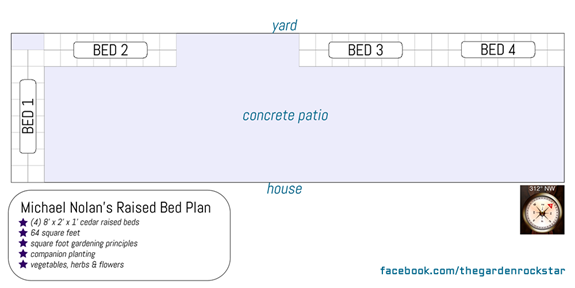
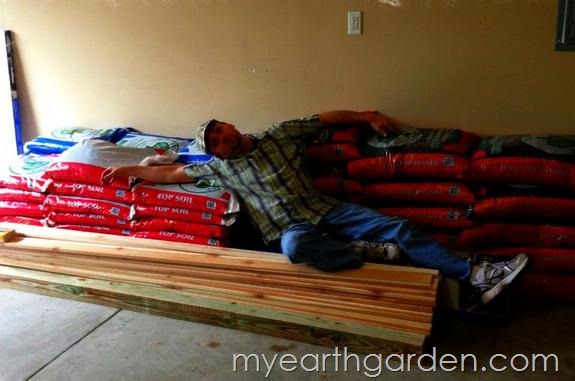
The design creates a total of 64 square feet of growing space that will reside atop the no frills concrete pad that is our patio. From there it was a simple matter of designing the beds themselves, then a trip (or three) to the home improvement store to gather the necessary supplies not only to build the beds, but to fill them as well.
In addition to the wood, screws, and landscape fabric, we bought 65.5 cubic feet of soil, compost, and amendments. They were not light. Advil was consumed in abundant quantities.
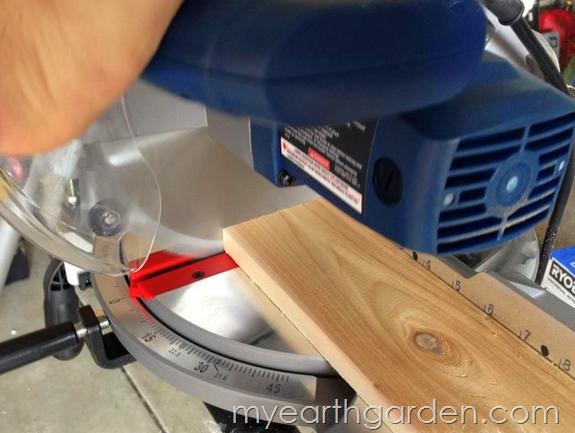 BF manned the new Ryobi miter saw, turning a stack of 8 foot lumber into four impressive-yet-simple raised beds.
BF manned the new Ryobi miter saw, turning a stack of 8 foot lumber into four impressive-yet-simple raised beds.
Without any plans, the process was learn-as-you-go, but the end result is better than I ever could have imagined it would be.
This is a “before” shot of the patio, with four GrowBoxes ready to be planted:
Two beds completed, installed, and filled with soil, compost, and amendments:
All four beds installed and ready for planting:
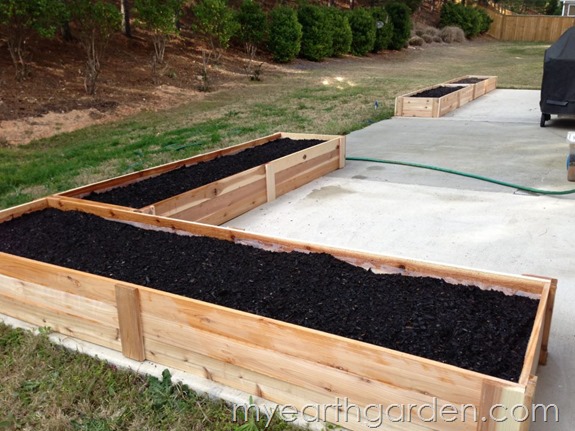
If you look carefully in the photo above, you can see the top edge of the plastic sheeting I stapled to the interior of the beds to create a barrier between the soil and the wood. This was done to slow down the wear-and-tear on the wood by limiting its contact with the moist soil.
I gave the beds a good, thorough soaking to give the bagged soil a chance to reconstitute and settle before I began planting the next afternoon.
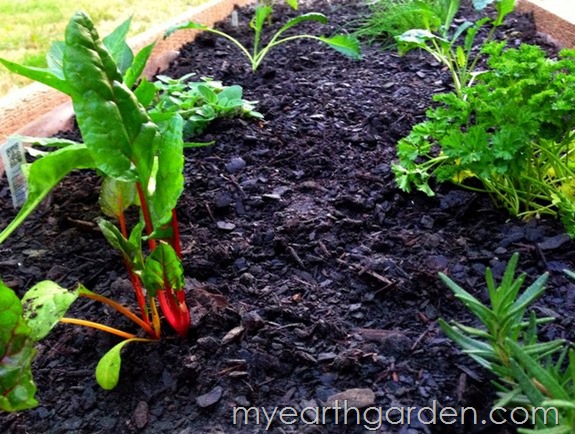
I am working on a cost breakdown of the project to analyze exactly how much these beds cost to build per square foot. That will allow us to calculate the value at the end of the season based on the return we see in the form of edible produce. Interested in what is being planted in these beds? I’m going to talk more about that, too.
More on all of that later. For now, it’s great to be back writing on the blog after spending a few weeks getting adjusted to my new full-time contract with The Home Depot. I promise I’m going to spend a lot more time here from now on.
Ooh! One final thing before I run off… in the process of building and planting the beds, I did something I’ve done for years without a second thought. When I snapped a photo and shared it on my Facebook page, I realized that it was something that a lot of people were excited about. These templates for square food gardening are simple to make out of a 1’ square of cardboard, and they make planting according to the grid method ultra-simple without having to lay out strings or boards to keep your boxes straight.
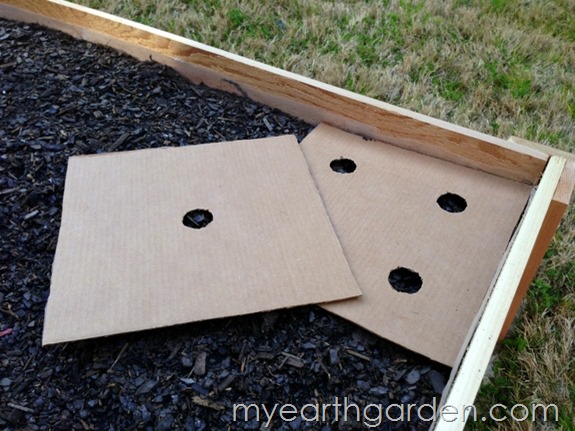
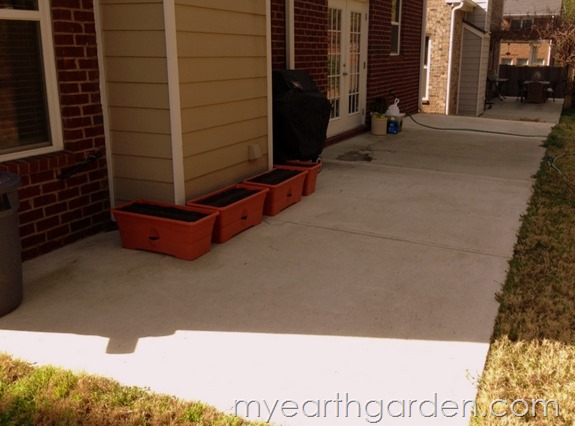
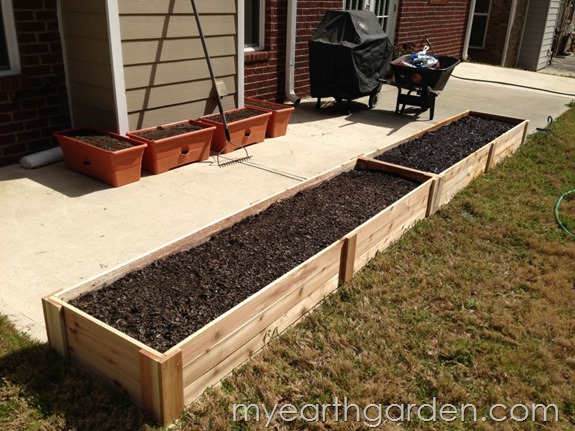








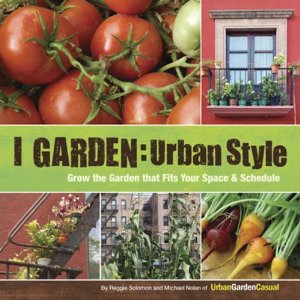

{ 5 comments… read them below or add one }
Really good to see you posting again. I was so pleased a while back when I stumbled across your blog, but then there weren’t any new posts! Keep it up, please. ;-)
Nice work! What kind of Ryobi Miter saw are you using? I am looking to buy my first saw so that I can build similar raised beds. If you could direct me, I would be grateful! Thanks for sharing!
This is the Ryobi we used to build the raised beds.
Oh I see you put the raised beds on the concrete. We have concrete garden where we rent and we want to make some raised bed. How is your experience with it? How high we should make the beds to accommodate the lack of soil underneath? Thanks!
Nihal,
The height of your raised beds depends on what you plan to grow in them. If you want to grow something like tomatoes that require a lot of root space, you should make them as high as possible. Root vegetables like carrots or parsnips need about 12″ depth as well. Greens and most herbs will do well in a raised bed that is 6-8″ deep.
{ 1 trackback }